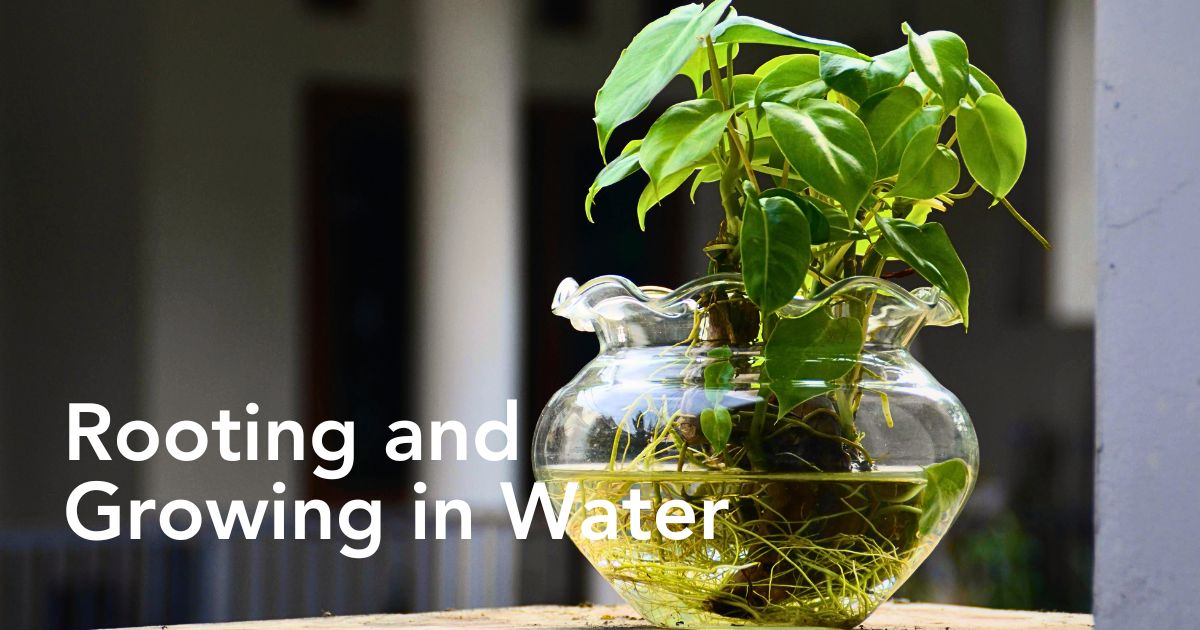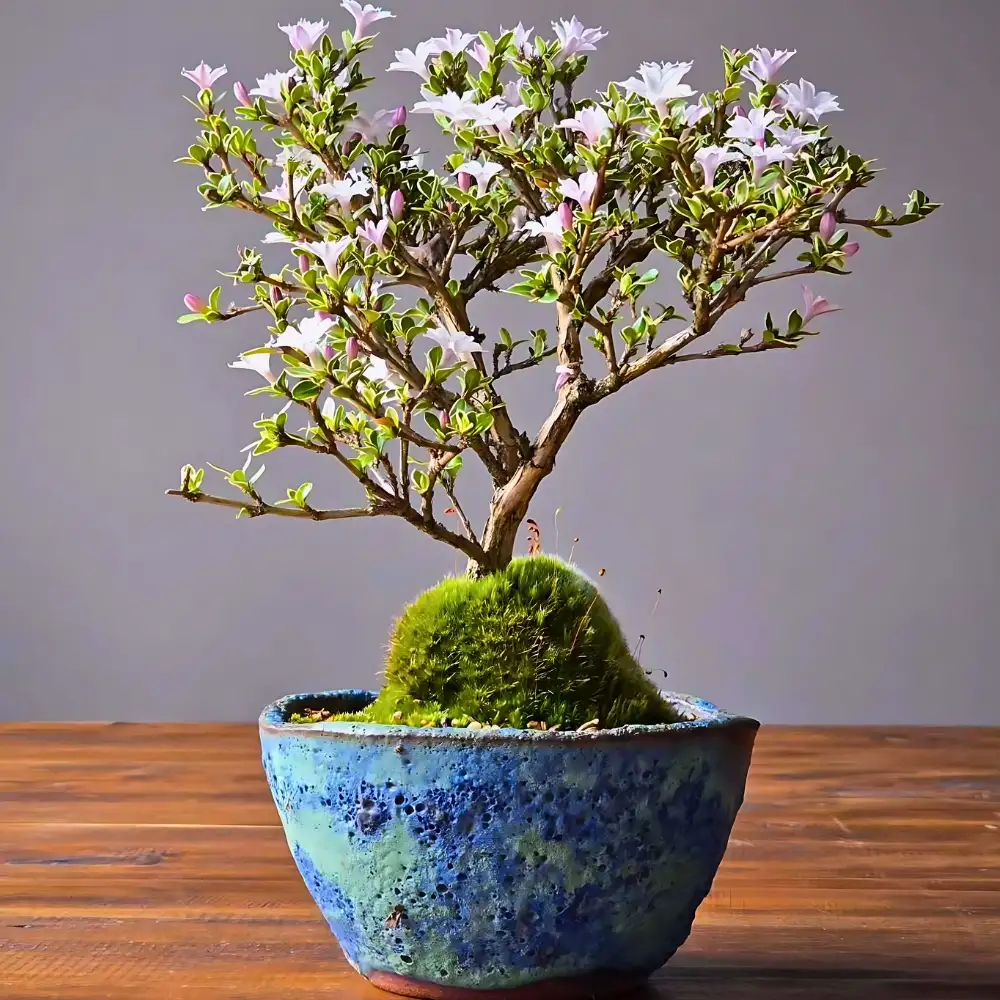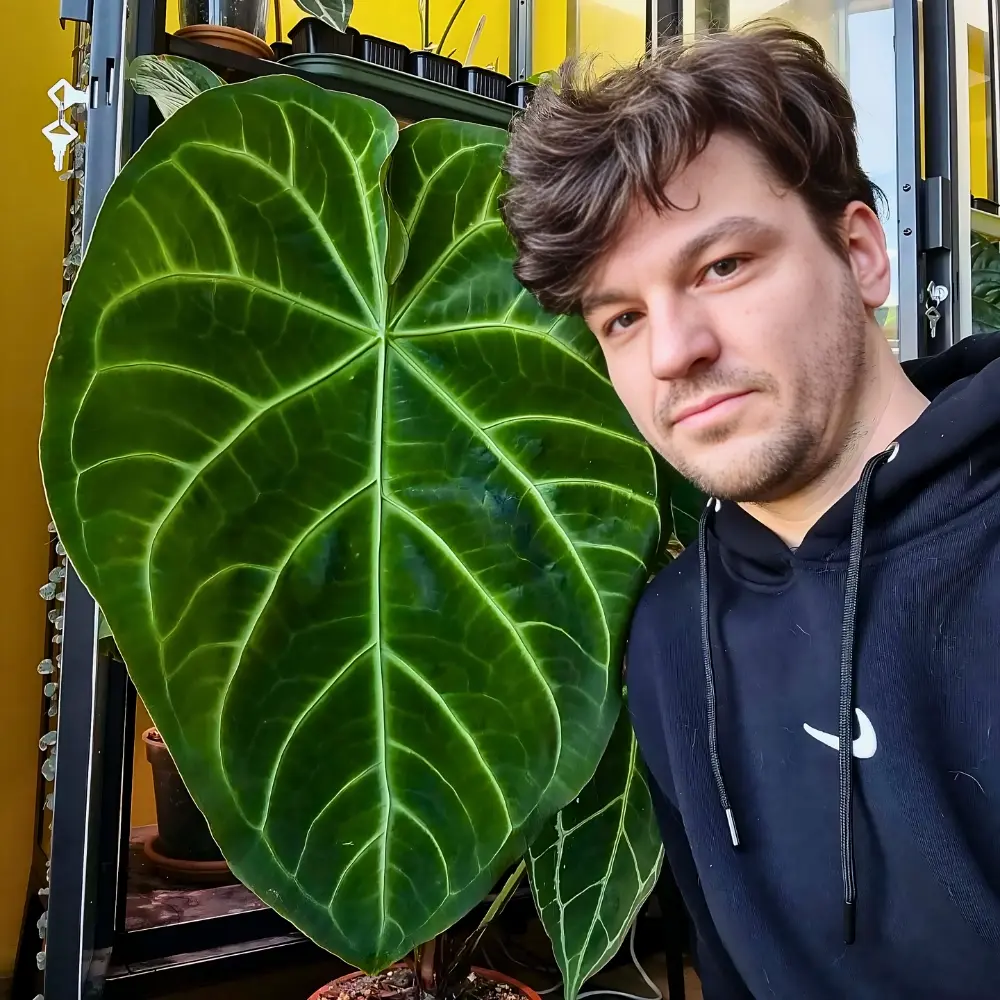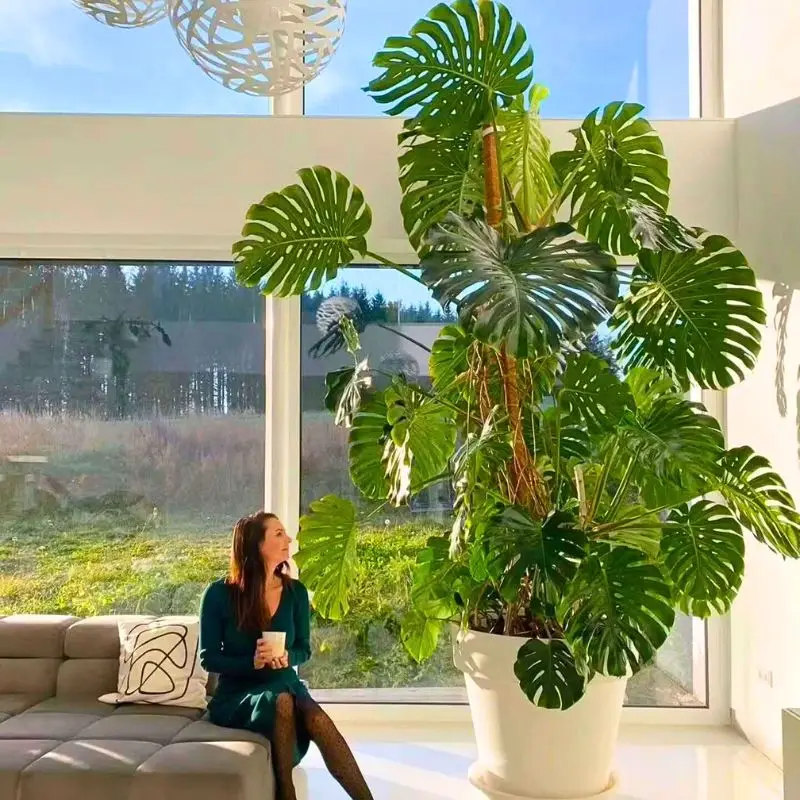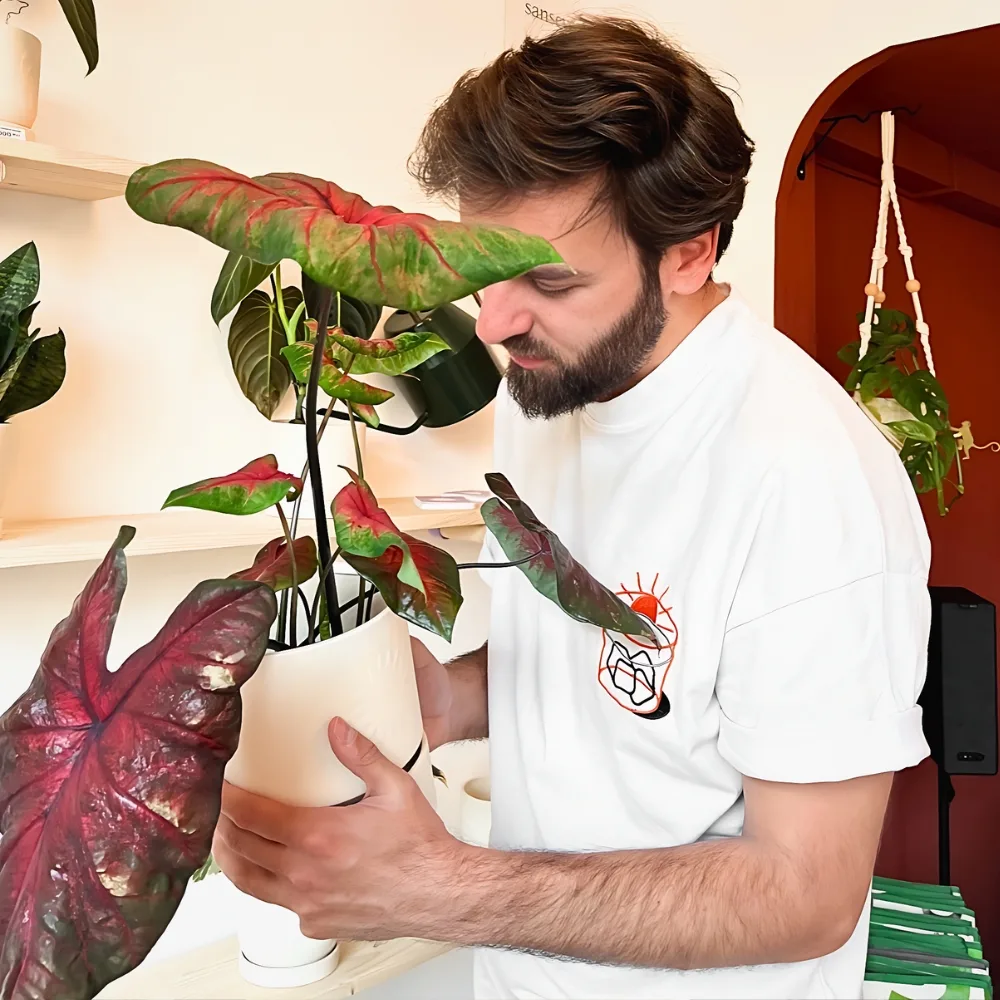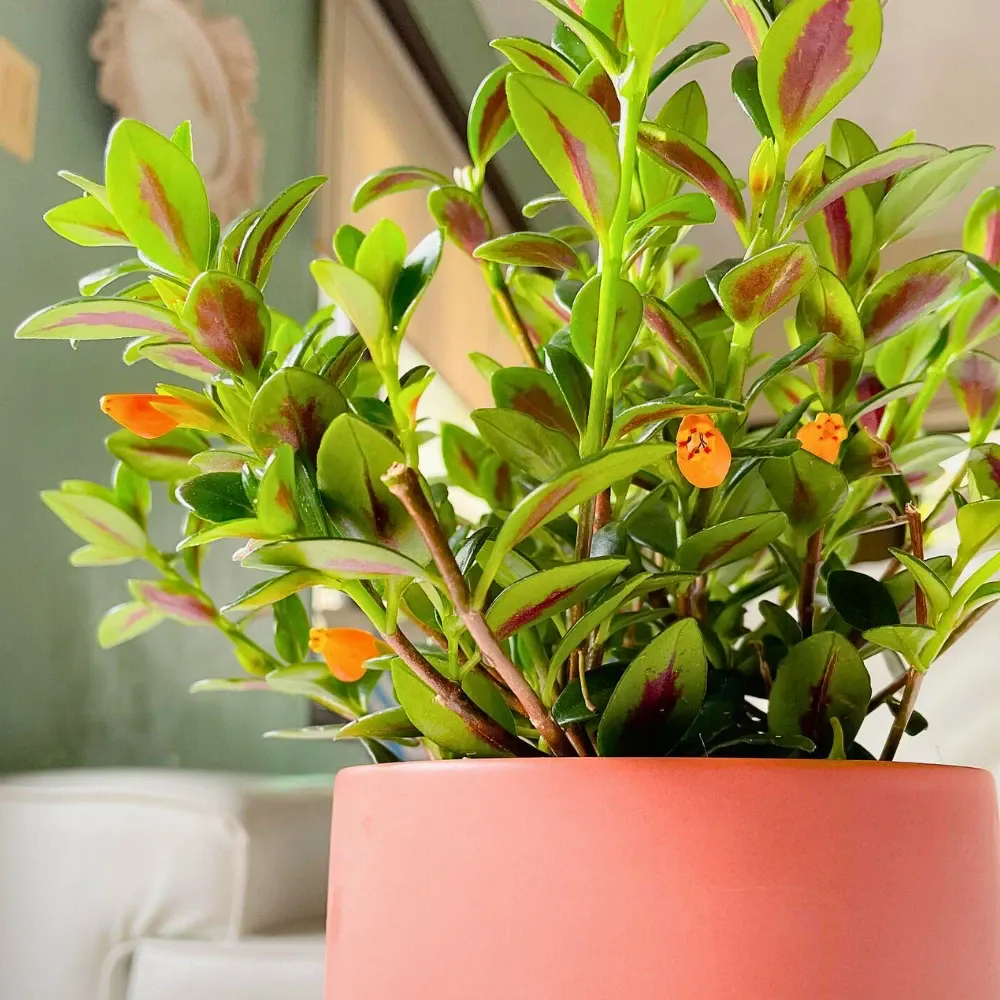Hydroponics is one of the hottest plant trends currently shaping indoor gardening. This means growing hydroponic plants in water without the usual need for elements like soil, pumice, perlite, and even peat. This innovative method allows one to enjoy beautiful glass-plant combinations while watching roots develop from all angles. Hydroponic houseplants are made particularly appealing by the fact that they require minimal care compared to traditional soil-based plants.
Are you looking for the best hydroponic plants as a beginner? Or, perhaps, seeking to explore some fast-growing hydroponic plants for quick results? Well, growing these indoor plants in water offers an elegant and efficient solution for modern home gardening. If you, therefore, are curious to know how hydroponics work, or perhaps, which are the most ideal hydroponic houseplants to invest in, then worry not, for you are in the right place.
Understanding Hydroponics - How Hydroponic Systems Feed Plants Without Soil
Hydroponics is an innovative method of growing plants without soil, using nutrient-rich water solutions instead. This fascinating technique enables you to grow hydroponic plants indoors where temperature, humidity, and lighting can be precisely controlled to maximize plant growth. The beauty of hydro plants indoors lies in their ability to absorb nutrients directly from water, eliminating the complex soil ecosystem while providing everything plants need to thrive.
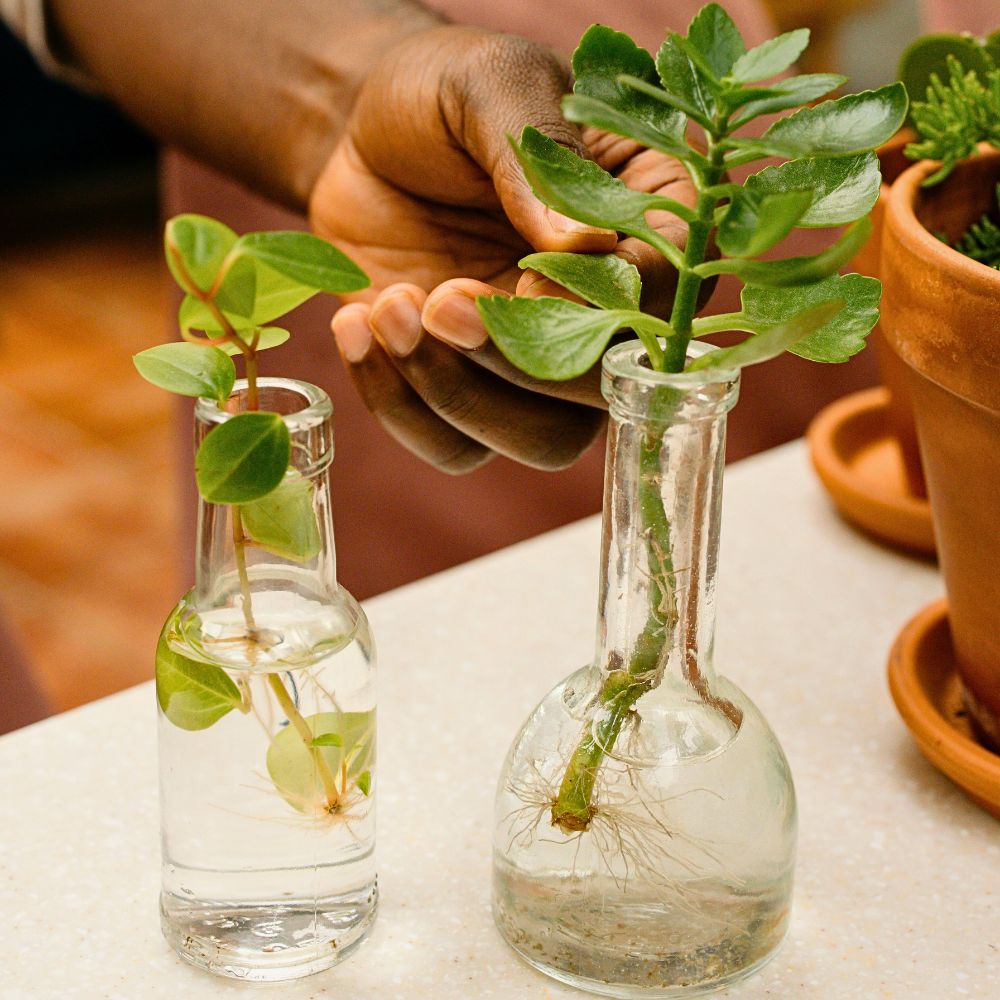
The word hydroponics comes from the Latin phrase meaning 'working water,' and it, actually, is an ancient technique dating back over 2,600 years. Today's hydroponic houseplants benefit from modern understanding of plant nutrition and controlled growing environments, making them some of the best indoor hydroponic plants for contemporary homes. Using this method, although many plants will root and grow well in just a glass jar and a little water, you can accelerate their growth with correct plant nutrition and adequate lighting. That said, here are 10 hydroponic plants that are great for beginners in case you're just starting this new chapter of plants for your indoor spaces!
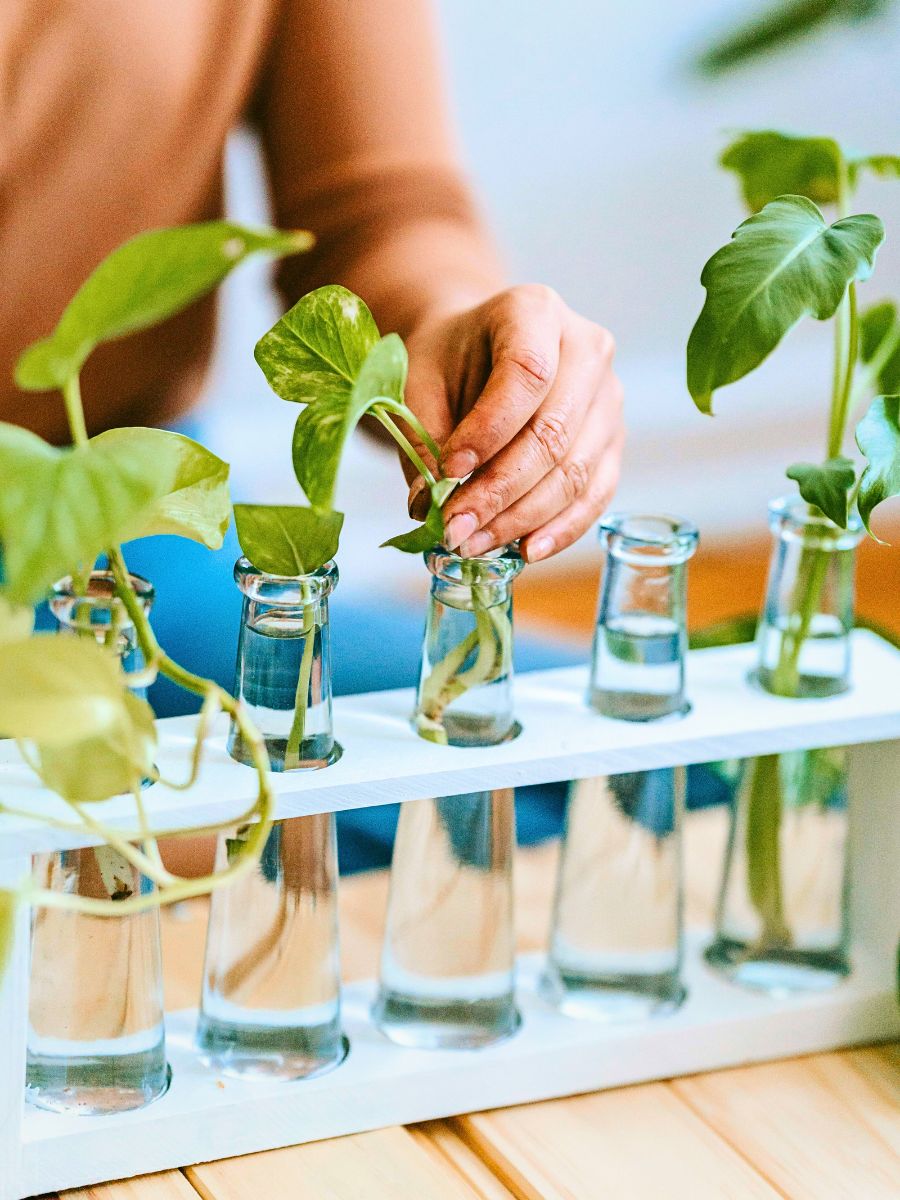
10 Easy Indoor Hydroponic Plants You Can Grow in Water
Have you ever cut a plant? Then you probably already have experience with hydroponics. When you put the cutting in water, it can take root. You often pot this small plant afterward, but you can also let it grow further in the water. The plant then gets all the nutrients from the water, so that it hardly needs any care. This applies to cuttings, but you can also put a complete houseplant in a large vase! Just make sure to change the water every two to four weeks and use a water-soluble fertilizer when necessary. So, which houseplants are suitable for growing in water as hydroponic plants? Check these ten options out!
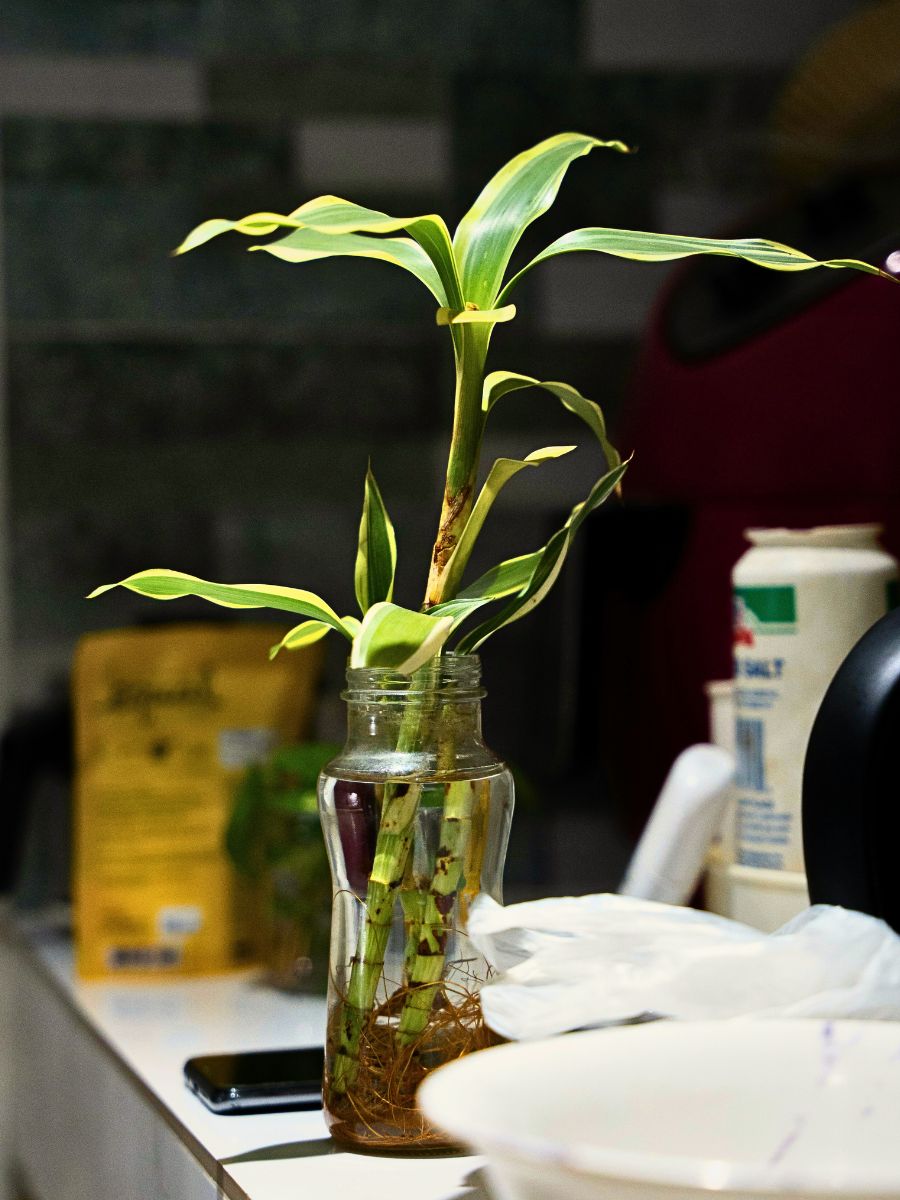
1. Spider Plant (Chlorophytum Comosum)
Spider plants are among the best hydroponic plants for beginners, featuring arching leaves with distinctive white stripes. These hydroponic houseplants are relatively easy to grow in water and produce baby plantlets that can dangle from long stems or be propagated separately. Spider plants are known for their exceptional air-purifying qualities and adapt wonderfully to water propagation, producing offshoots called ‘spiderettes’ that root directly in water. They tolerate lower light conditions but thrive in brighter environments, ideally making them one of the best indoor hydroponic plants for various home settings. However, avoid letting the leaves fall into the water!
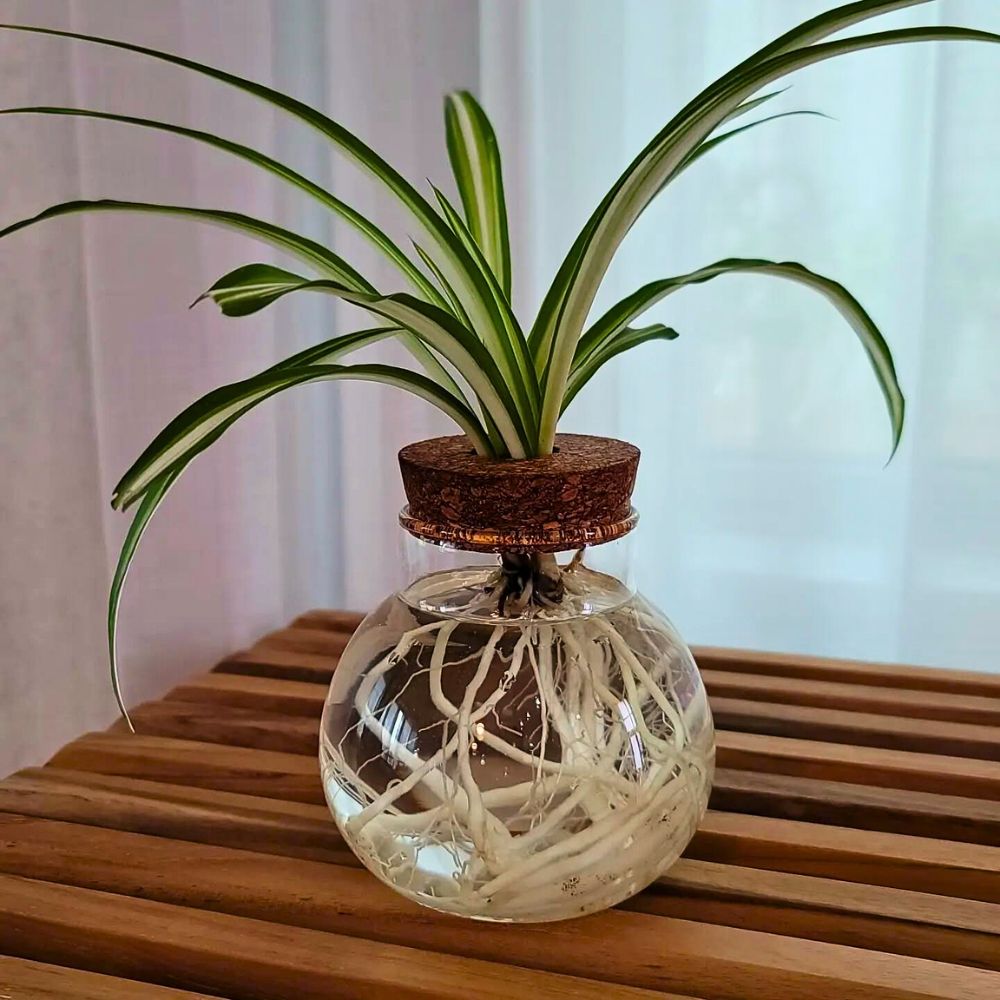
2. Lucky Bamboo (Dracaena Sanderiana)
Despite its name, Lucky Bamboo belongs to the Dracaena genus rather than the bamboo family. This auspicious houseplant that can be grown as a hydroponic indoor plant is said to bring good fortune and creates a bold statement in home decor. Lucky Bamboo prefers bright, indirect light and can become top-heavy, so securing it properly in your glass vase with decorative stones is essential. It can be grown in water alone or with decorative pebbles, adding an elegant touch to any room. Noteworthy is that these Lucky Bamboos also bring good luck and fortune.
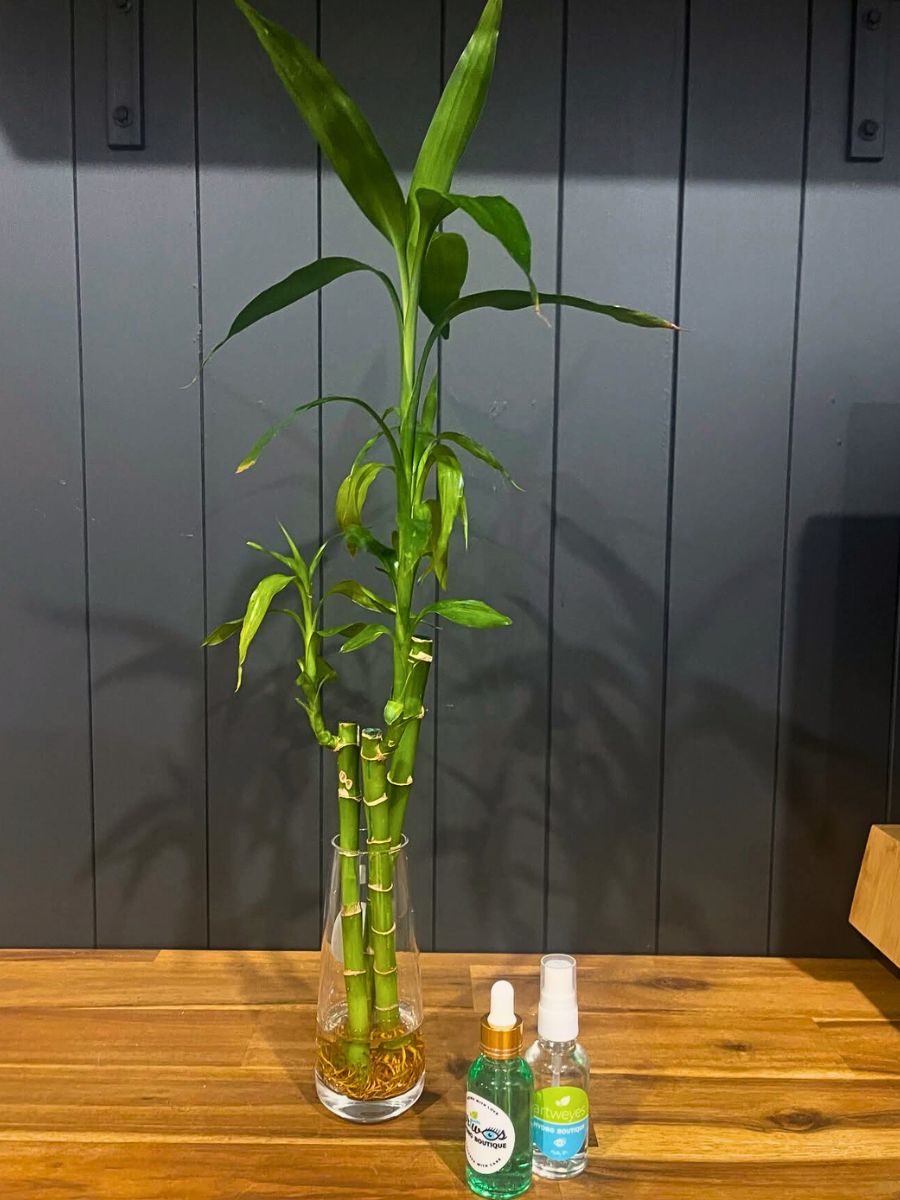
3. Pothos Plant (Epipremnum Aureum)
Pothos, also known as Devil's Ivy, is one of the easiest hydroponic plants to grow in water. Its trailing vines with heart-shaped leaves make it ideal for hanging baskets or cascading from shelves. Because this houseplant requires frequent watering, it makes sense to grow it in water rather than soil. To propagate Pothos in water, take 4-6-inch tip cuttings just below a node, ensuring 2-3 nodes are submerged in clean water. Pothos will quickly develop roots and continue growing for years without soil, making it a perfect choice for hydroponic houseplants. PS: They prefer growing in the bright shade.
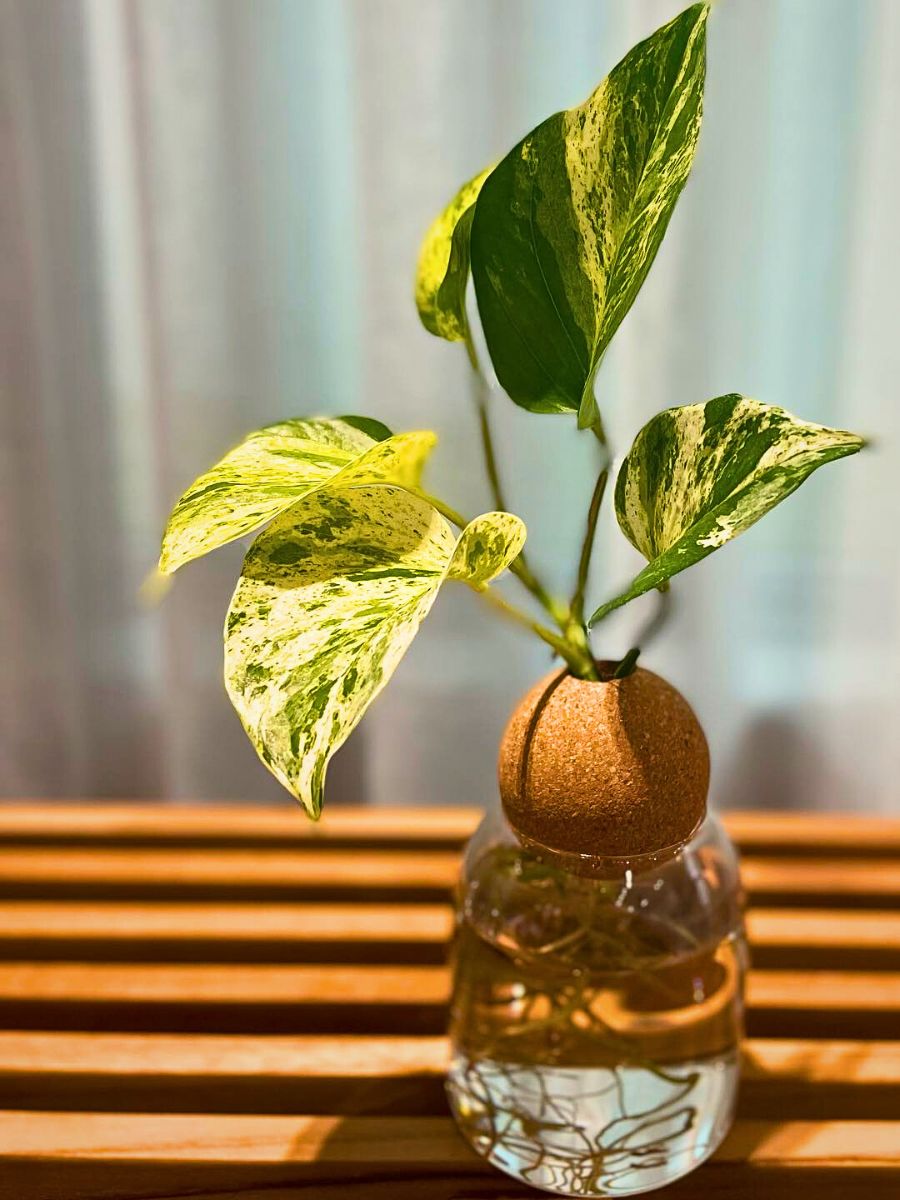
4. Velvet Leaf Philodendron (Philodendron Micans)
Philodendrons are popular hydroponic houseplants that adapt exceptionally well to water cultivation, aside from their normal soil-cultivation conditions. The Velvet Leaf Philodendron specifically features small, dark green to reddish foliage that's soft to the touch and glistens beautifully in light. Both vining heartleaf philodendrons and larger split-leaf varieties thrive in water culture, which makes them versatile choices for different indoor environments. This houseplant roots well and grows vigorously in water.
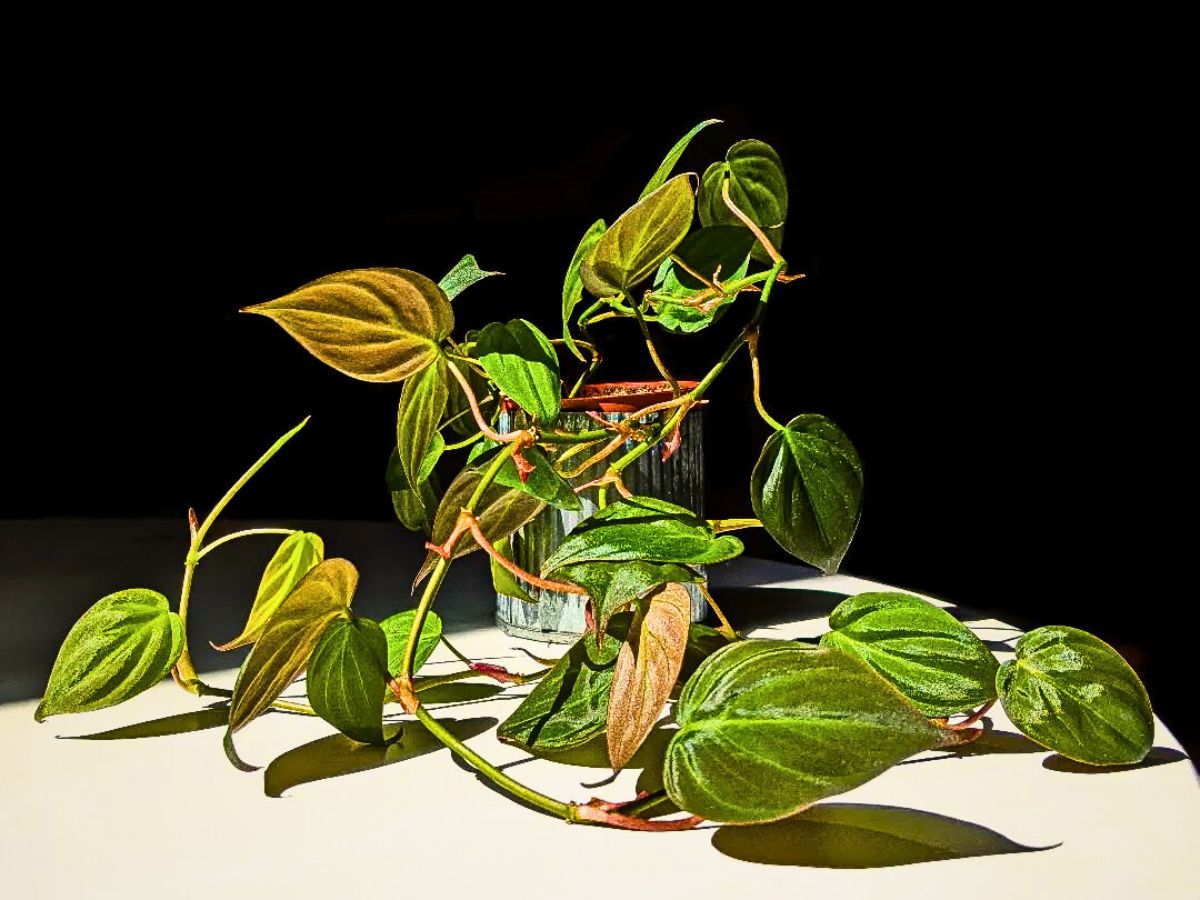
5. Coleus Plant
Coleus is an easy-to-grow houseplant that can also be grown as a hydroponic plant, thriving in water environments. Many gardeners prefer saving Coleus cuttings to start new plants before the growing season. Simply remove the lower leaves from a stem cutting and place it in water for a few weeks to develop a fully rooted plant. Coleus is one of the easiest plants to propagate—just snip small cuttings and place them in water. Coleus thrives in both full sun and partial shade and grows equally well in containers and the garden.
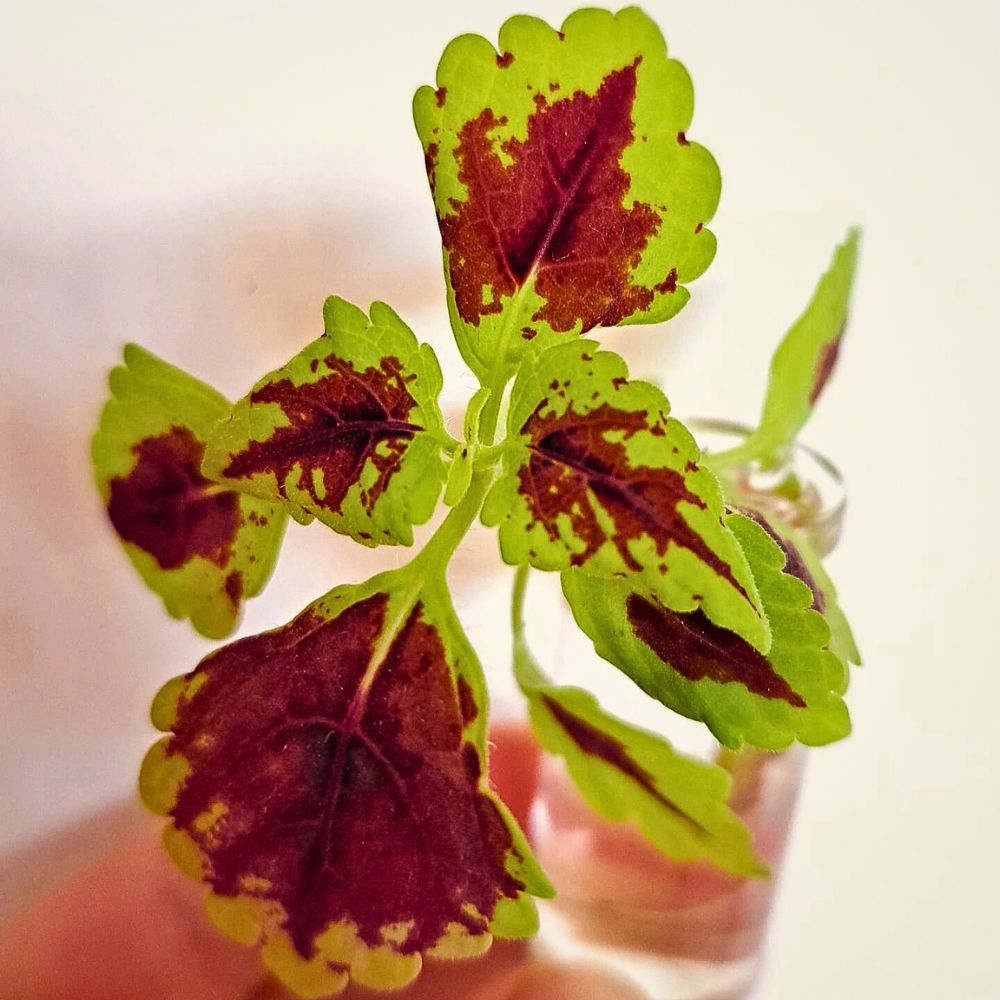
6. Monstera Plant
Monstera, also known as the Swiss Cheese plant, is a stunning indoor plant that can function as a hydroponic houseplant. It has large, fenestrated leaves and grows well in bright, indirect light. It makes a dramatic statement when grown in water. When growing Monstera hydroponically, be mindful of proper water quality and provide structural support as the plant grows and develops.
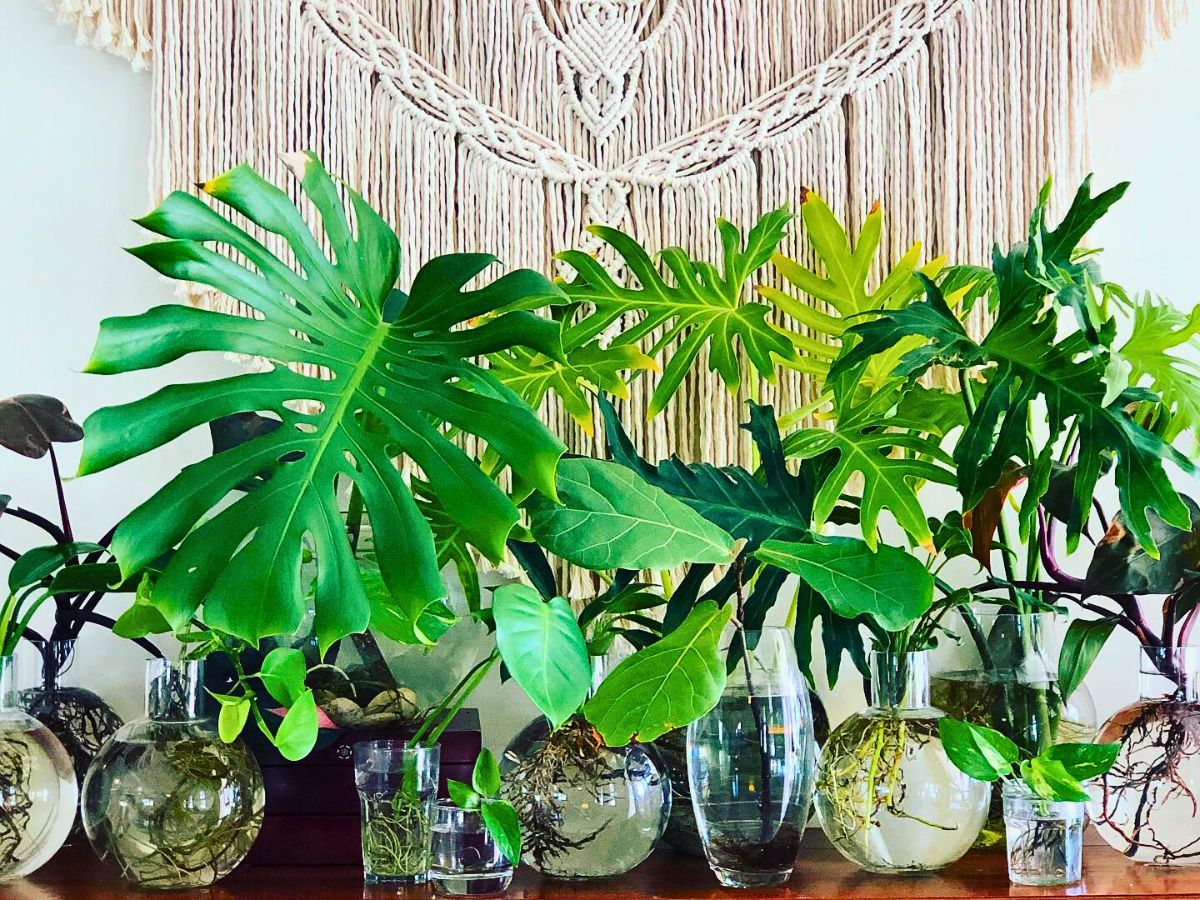
7. Satin Pothos (Scindapsus Pictus)
Another vining option is known as 'Satin Pothos' or 'Silver Philodendron'. This vining, hydroponic houseplant belongs to the Scindapsus genus. Its attractive, vining nature and pretty silver leaf spots make it an excellent choice for lovely hydroponic plant displays. This plant helps create an indoor jungle atmosphere in your home while thriving in water-based growing systems, thus quite easy to maintain.
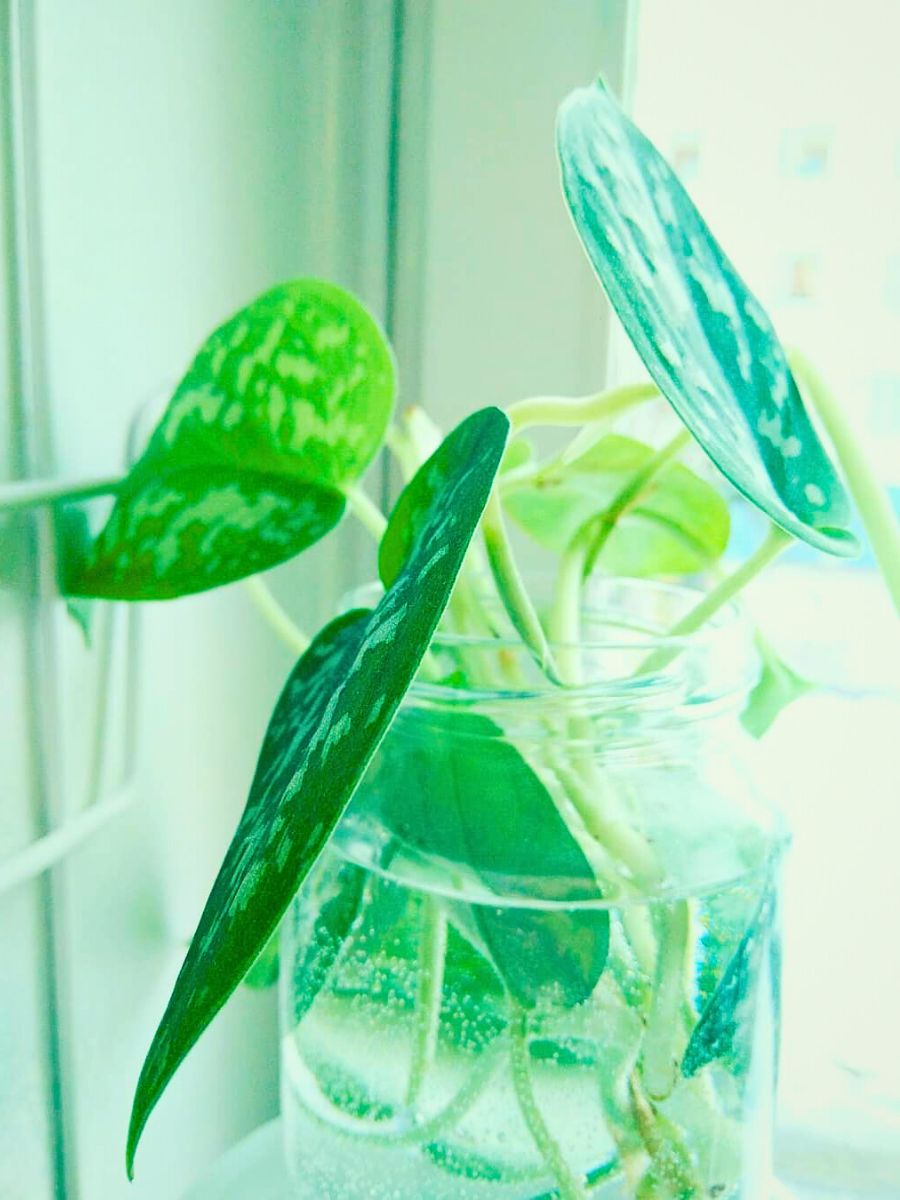
8. Peace Lily (Spathiphyllum Sp.)
Peace lily is one of the most popular choices for hydroponic growing. This tropical aroid is beloved as a classic hydroponic houseplant due to its easy care requirements and beautiful white flowers. When provided with bright indirect light and extra nutrients, Peace lilies can bloom almost year-round in hydroponic systems.
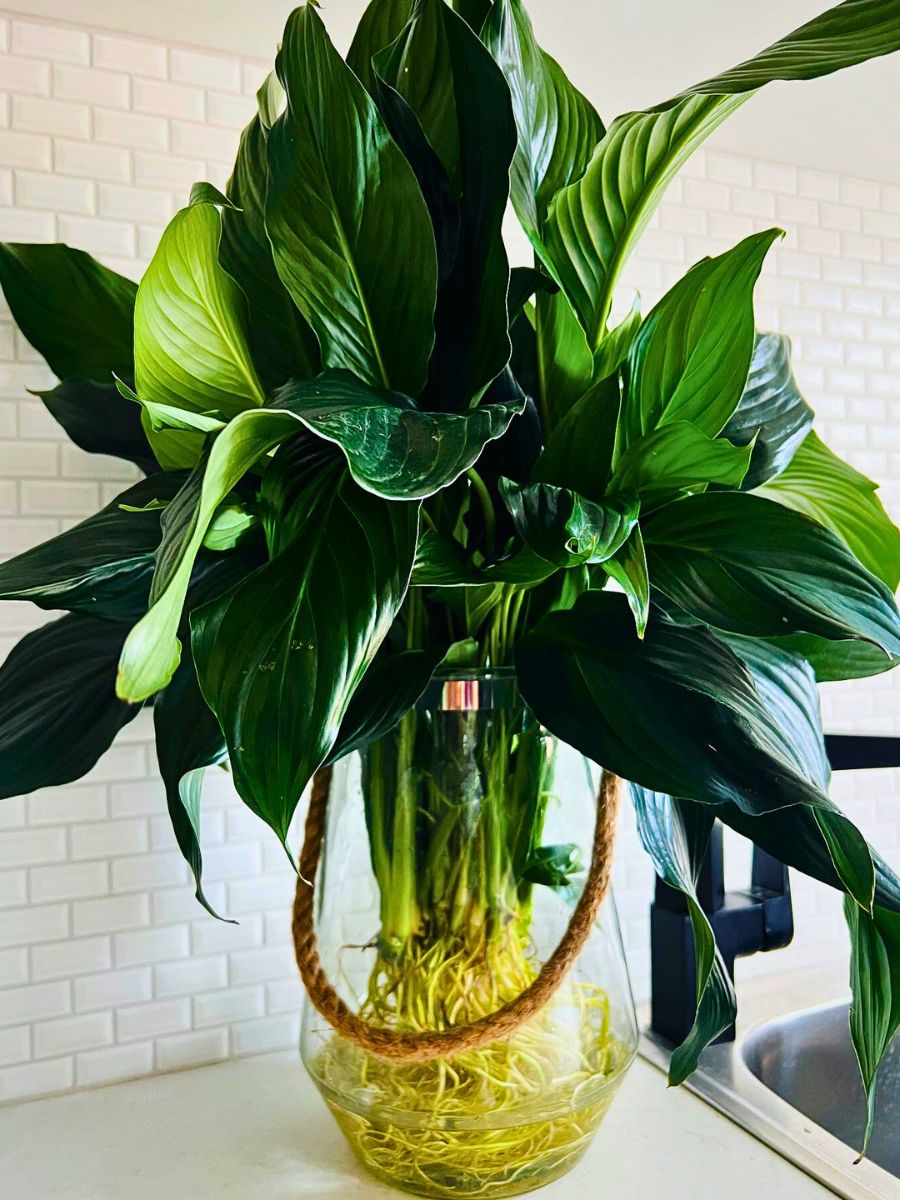
9. Arrowhead Plant
The Arrowhead plant is yet another popular hydroponic plant, of the genus Syngonium, bearing distinctive arrow-shaped leaves that grow in vining or bushy forms. These hydroponic houseplants come in various colors, including green, white, pink, and burgundy. To grow it in water, clip healthy stems with at least 2-3 nodes and place the lower nodes in clean water with bright, filtered sunlight. If you put its roots in an aquarium, it will grow beautifully for years despite not getting much light at all. The Arrowhead plant is an excellent decorative addition to any home decor style. Ideally, grow it in a beautiful terrarium, use it as a centerpiece on a coffee table, or place it on a shelf or reading desk—it'll look great!
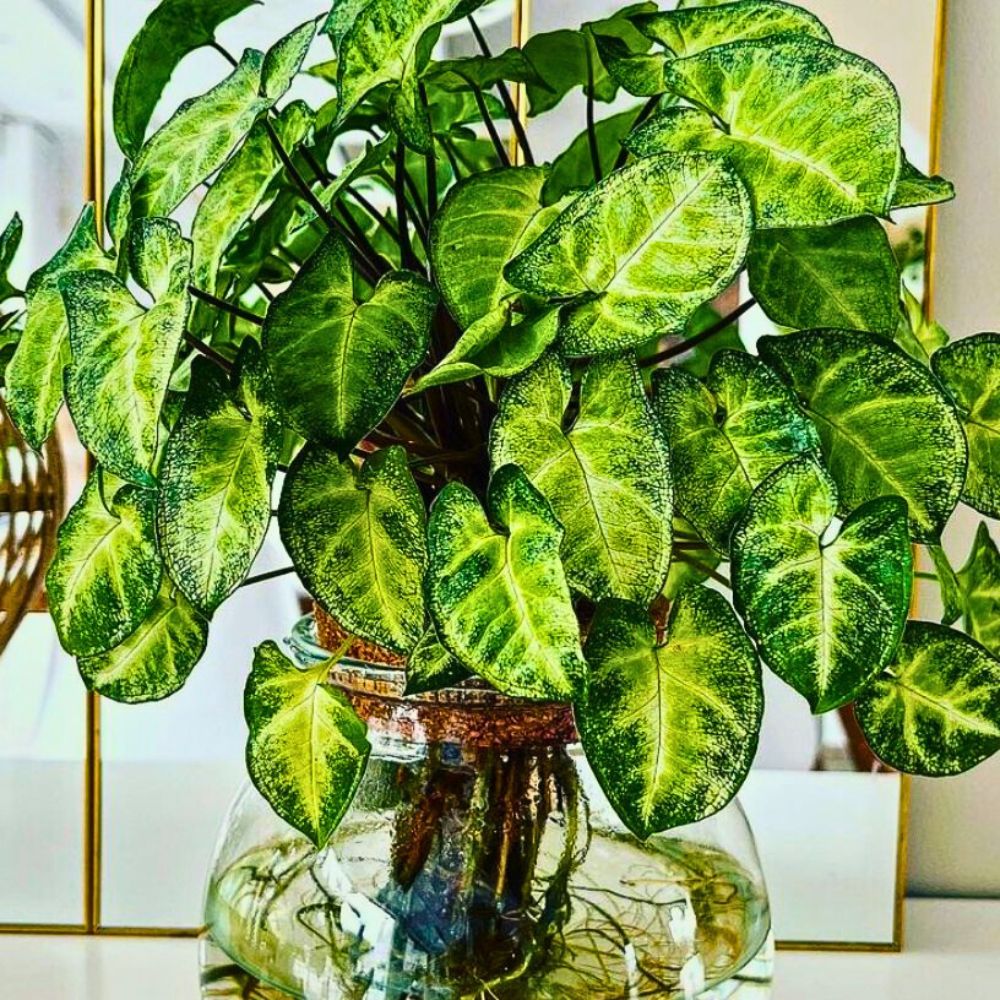
10. Geranium (Pelargonium Sp.)
Geraniums are commonly grown as warm-weather annuals outside, but did you know they can also be grown as long-lived houseplants in water? They also make great houseplants for hydroponic cultivation, offering colorful blooms and attractive foliage. These annuals blend well with water-based growing systems and can provide long-lasting beauty in hydroponic arrangements. To grow them hydroponically, clip a 6- to 8-inch piece of stem just below a leaf node to keep your geraniums going through the colder months without the hassle of overwintering their container indoors. Place the stem in a glass of water to form roots. Any cultivar will thrive in water if you remember to change the water every few weeks when it begins to cloud.
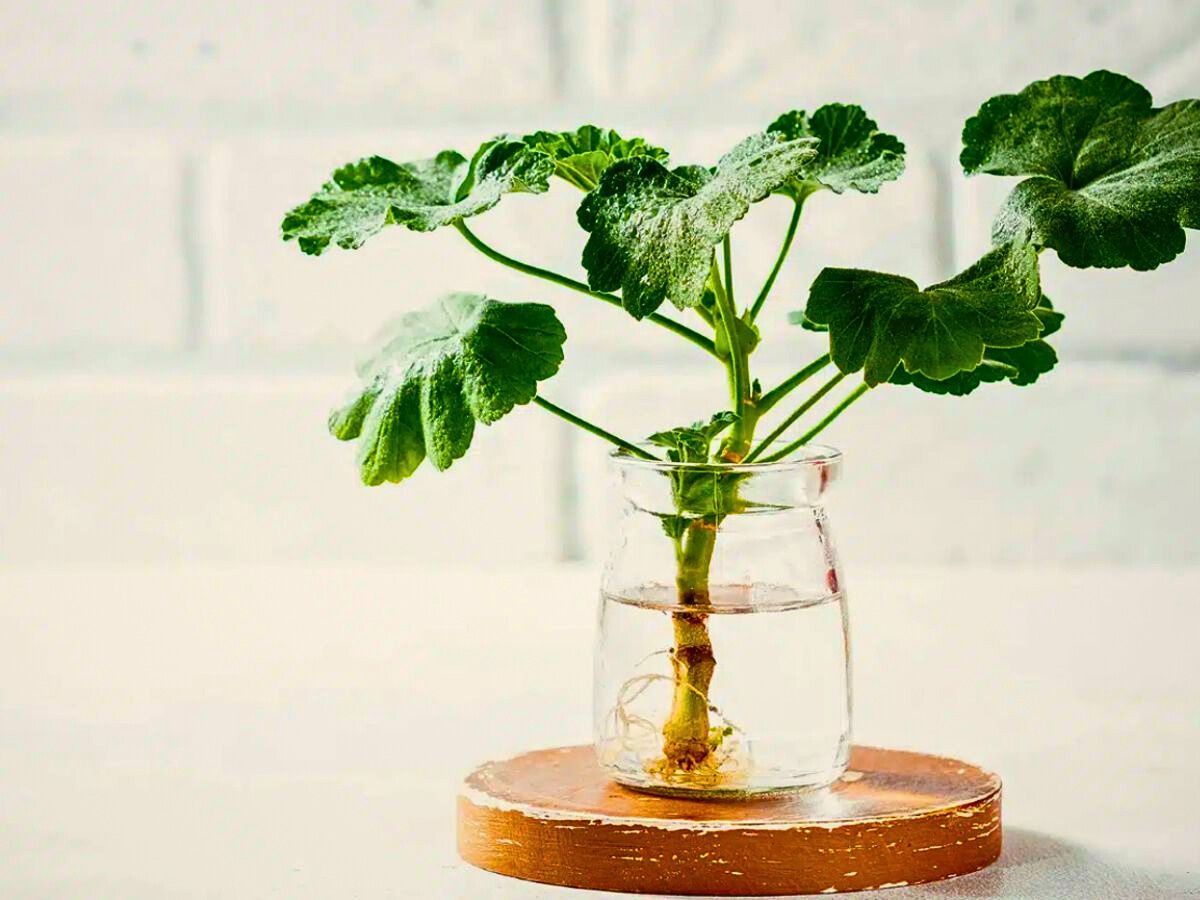
Quick-Harvest Herbs for Your Indoor Hydroponic Garden
The above list also incorporates several herbs that can be grown hydroponically. So, if you are looking for fast-growing hydroponic plants that deliver quick satisfaction, several options excel in speed and productivity. Lettuce tops the list as one of the fastest hydroponic plants, with most varieties ready to harvest in just 3-4 weeks. Watercress is another exceptionally quick grower, ready for harvest in just 15-20 days.
Basil and other herbs are excellent, fast-growing hydroponic plants as well, with basil ready to harvest in as little as 28 days under ideal conditions. Spinach grown in hydroponic systems can be ready to harvest in as little as two weeks when started from seedlings. Radishes also grow remarkably quickly, often ready for harvest in about a month after transplanting seedlings to the hydroponic system.
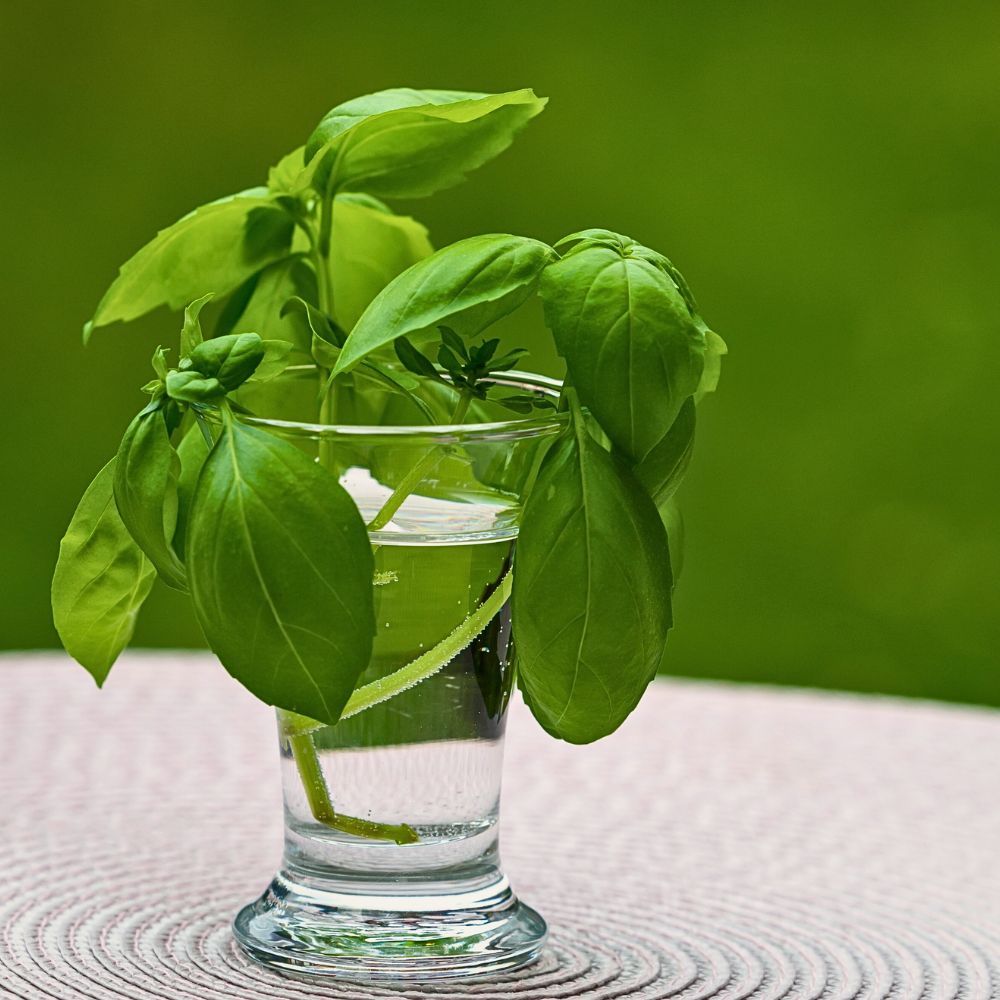
Must-Have Herbs for Any Hydroponic System
Herbs are some of the best hydroponic plants for beginners due to their minimal space requirements and ease of care. Basil, mint, cilantro, rosemary, sage, chives, and oregano all thrive as hydroponic houseplants. These herbs grow incredibly fast in water, so quickly that they may produce new leaves daily.
This makes them ideal for kitchen gardens where fresh herbs are always within reach. When growing herbs as hydroponic plants, choose perennial varieties that return year after year. These hydro plants indoors are particularly valuable because they provide fresh flavoring for cooking while requiring minimal maintenance compared to soil-based herb gardens.
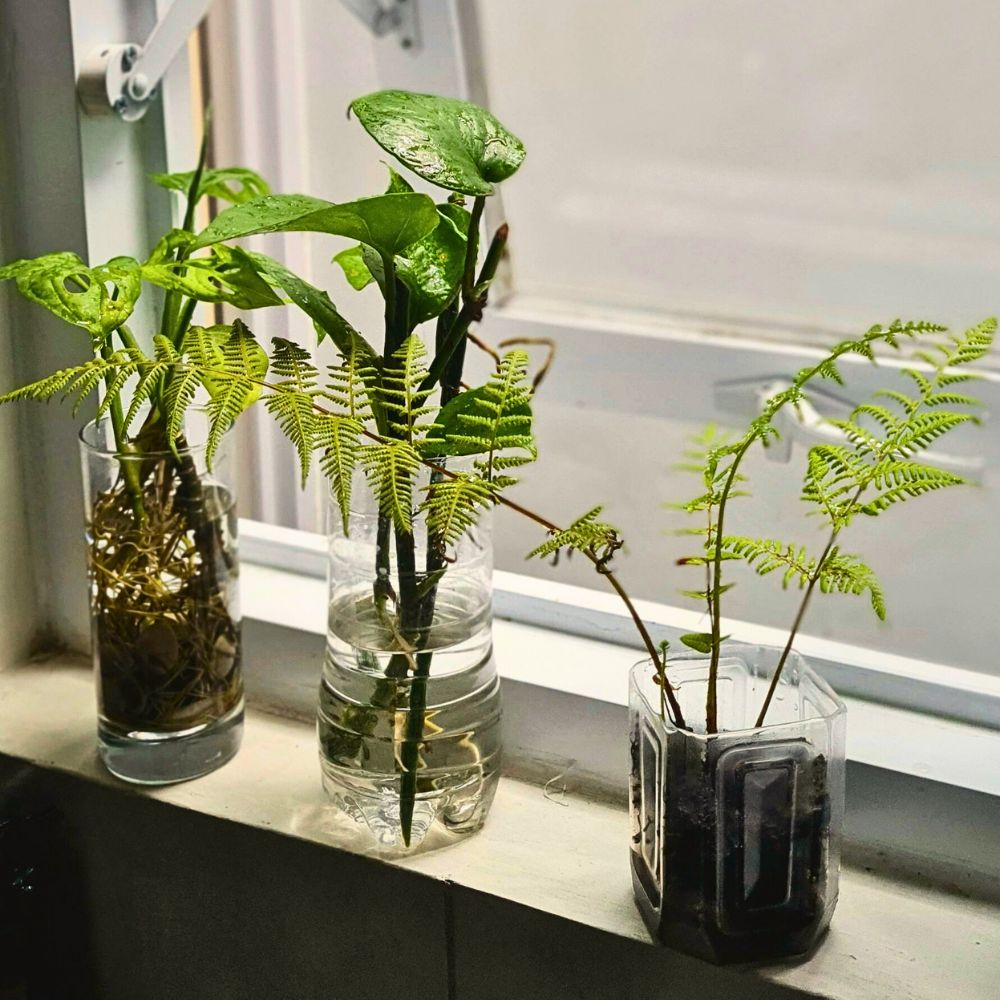
Setting Up a Beginner-Friendly Hydroponic System at Home
To successfully grow hydroponic plants, you need several key components:
- A clean vase or glass container
- Clean, sharp pruning shears for taking cuttings
- Spring water or tap water with plant food
- Proper lighting (bright, indirect sunlight)
- Hydroponic plants or cuttings to be ready for water propagation
Step-by-Step Hydroponic Setup Guide
Choose the right stem that doesn't have a bud, cutting it to about 10-15 cm, depending on plant size. Remove lower leaves and ensure you use clean scissors for all cuts. Select a vase with a narrow top so only the bottom of the cutting remains in water.
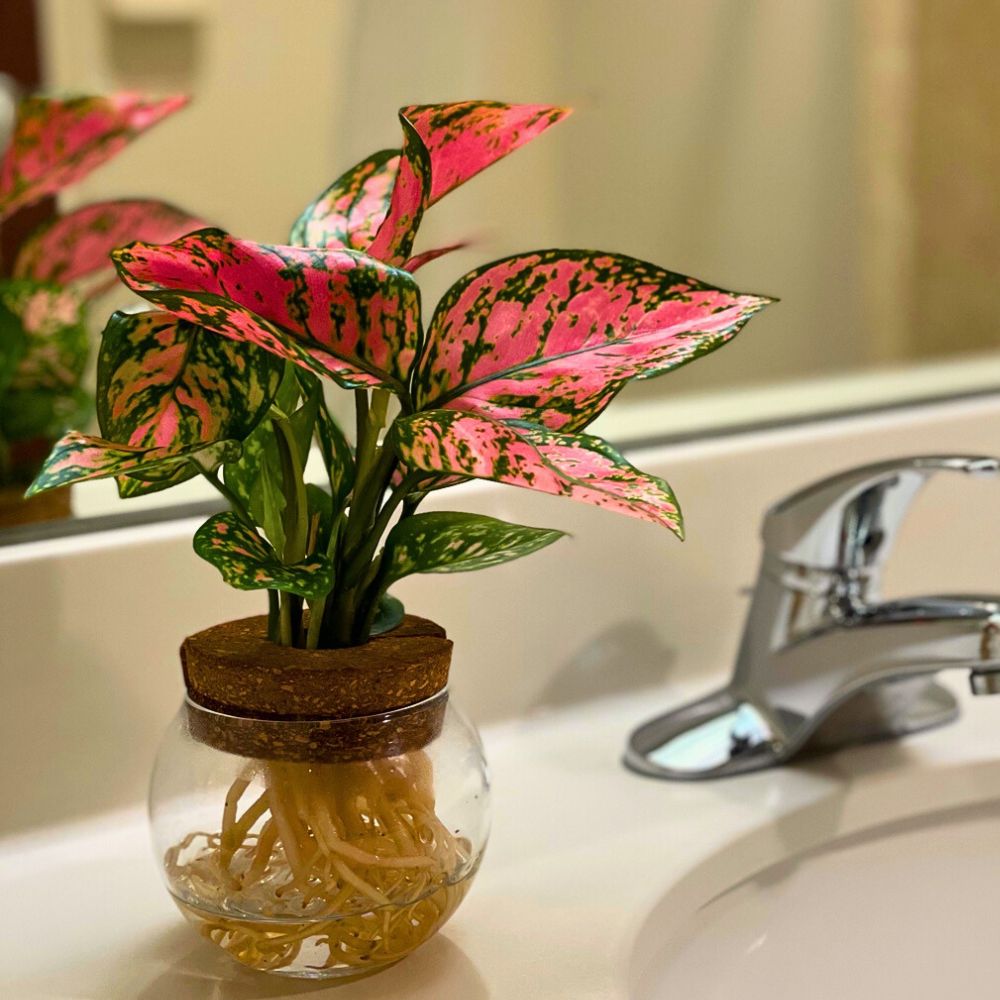
Fill your container with spring water at room temperature, which contains important minerals that promote growth. If spring water isn't available, use regular tap water with plant food. Place the cutting in the vase, ensuring only the bottom portion touches water, then position it in a bright location away from direct sunlight.
For those ready to explore beyond simple water propagation, several hydroponic systems can support larger hydroponic plants indoors. Deep Water Culture (DWC) systems submerge plant roots in oxygenated nutrient solutions, providing excellent conditions for the best hydroponic plants. Nutrient Film Technique (NFT) systems create a thin film of nutrient-rich water that constantly flows over roots.
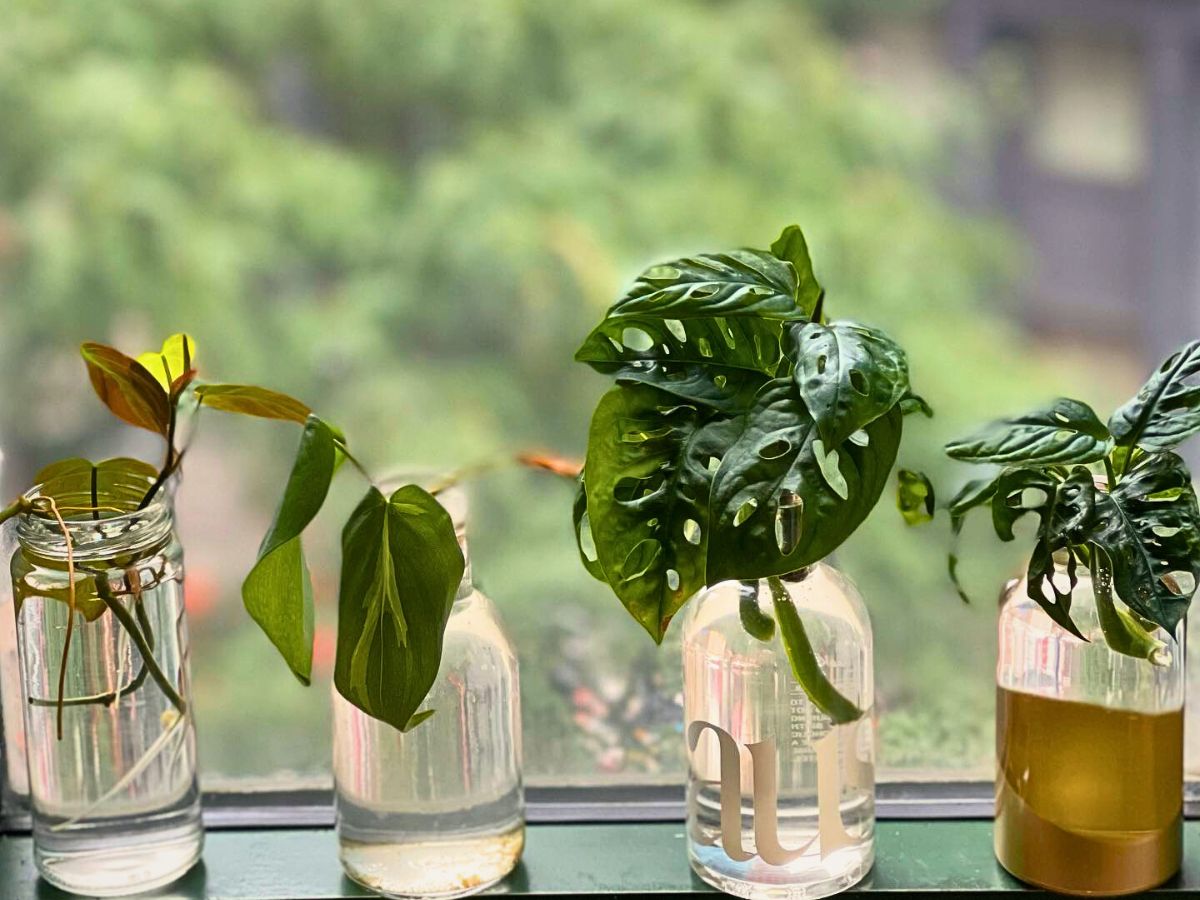
Daily Care Routine for Hydroponically Grown Plants
Hydroponic plant care centers around proper water management and nutrition. Change water every two to four weeks for optimal plant health, and use water-soluble fertilizer when necessary. Hydroponic plants require different nutrients from soil-based plants because they depend entirely on what you provide in their water solution.
Monitor pH levels regularly, as most hydroponic plants thrive with water pH between 5.5 and 6.5. The EC (electrical conductivity) level measures dissolved salts in water and should be monitored to ensure proper nutrient concentration. These factors are crucial for the successful growing of indoor plants in water.

Light Requirements
Hydroponic houseplants need adequate lighting to photosynthesize effectively. Place your hydro plants indoors near windows that receive plenty of bright, indirect sunlight. Many best indoor hydroponic plants can tolerate lower light conditions but perform better with proper illumination.
Monitoring Plant Health
Regular monitoring ensures your hydroponic plants remain healthy and vibrant. Check for signs of pests, diseases, nutrient deficiencies, or wilting leaves. Growing indoor plants in water reduces many soil-borne pest and disease issues, but vigilant observation helps catch any problems early.
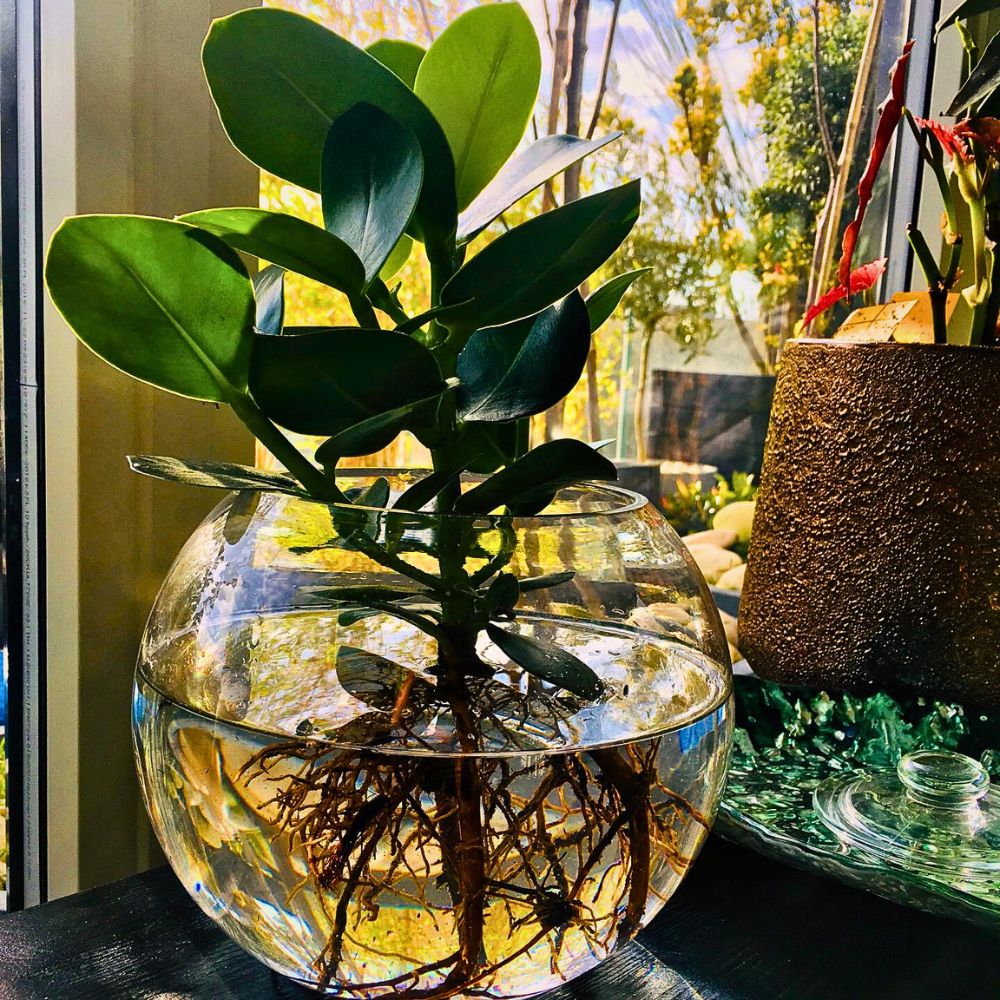
Why Hydroponic Gardening Outperforms Soil
Hydroponic plants typically grow 20-30% faster than soil-grown plants because they have better access to nutrients and no competition from weeds. The controlled environment allows hydroponic houseplants to focus energy on growth rather than searching for nutrients. Growing indoor plants in water also eliminates the mess associated with soil-based gardening. This makes hydroponic houseplants particularly appealing for pet owners, as there's no soil for curious animals to dig in or fertilizer granules to consume.
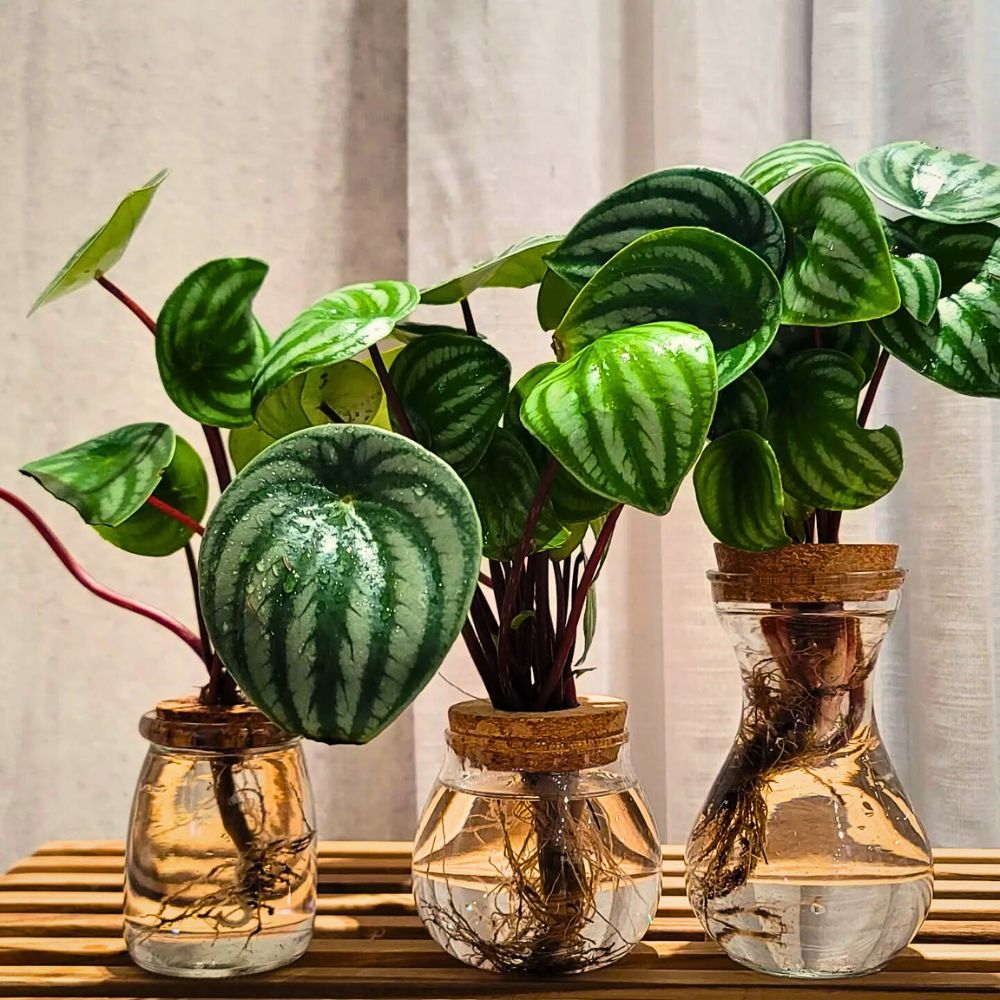
Furthermore, hydroponic plants indoors can be grown throughout the year regardless of weather conditions. This consistent growing environment makes the best hydroponic plants reliable sources of fresh produce and beautiful foliage regardless of season. Also, hydroponic plants require less space than traditional soil-based gardens, making them ideal for urban dwellers with limited space. The best indoor hydroponic plants can be grown in compact systems that maximize yield per square foot.
Feature image by @alexis.in.green, header image by Donny Yularso.

